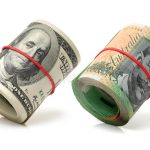Japanese Yen edges lower as traders favor the US Dollar ahead of the Fed’s interest rate announcement.
On Wednesday, the Japanese yen (JPY) fell for the fourth straight session. The USDJPY pair strengthens. As investors favor the US Dollar (USD) ahead of the Federal Reserve’s (Fed) decision and the release of US inflation numbers for May. Which is planned later in the North American trading hours. The Japanese yen may benefit from higher than expected Japanese producer price index (PPI) data. Data indicated that producer prices rose 2.4% year on year in May. Above market estimates of a 2.0% increase, raising concerns. That this may lead to higher consumer inflation.
The Japanese yen may appreciate after PPI rose 2.4% YoY in May, above market estimates of a 2.0% increase.
The Bank of Japan’s (BoJ) monetary policy is projected to remain steady on Friday. The interest rate differential between the United States and Japan continues to weaken the Japanese yen (JPY), providing a tailwind for the USDJPY pair.
The US Dollar retains its position as strong US employment statistics for May reduces the chance of a Fed rate drop in September.
The US Dollar Index (DXY), which measures the value of the US Dollar (USD) against six major currencies. Continues strong as solid US job data in May reduces the likelihood of a Fed rate drop in September. The CME FedWatch Tool shows that The likelihood of a Fed rate cut of at least 25 basis points in September has dropped to 52%, from 67% a week ago.
Daily Market Movers: Japanese Yen falls owing to interest-rate differential.
According to Reuters, Japan Finance Minister Shunichi Suzuki stated on Tuesday. That maintaining confidence in the country’s fiscal policy requires continuing efforts to achieve economic development and budgetary health.
Nearly two-thirds of analysts polled by Reuters on Tuesday expect the Bank of Japan to start cutting its monthly bond purchases at Friday’s policy meeting. This decision represents a critical first step toward gradually lowering the central bank’s swelling balance sheet.
Takeshi Minami, Chief Economist at Norinchukin Research Institute, stated, “There is no longer any justification to maintain large-scale purchases of government bonds since it has been judged that a 2% rise in prices is within reach,” per Reuters.
Japan’s 10-year government bond rate falls below 1% ahead of the Bank of Japan (BoJ) policy meeting on Friday. The central bank is anticipated to continue its present rate policy, while traders keep a tight eye on any prospective reductions in the bank’s monthly asset purchases.
Japan’s Gross Domestic Product (GDP) Annualized fell by 1.8% in the first quarter.
On Monday, Japan’s Gross Domestic Product (GDP) Annualized fell by 1.8% in the first quarter. Compared to a previous loss of 2.0%. The data marginally beat market expectations for a 1.9% decline. Meanwhile, Japan’s GDP (QoQ) fell by 0.5%, consistent with the flash figures.
Rabobank suggested in their weekly According to reports, the Federal Reserve may decrease interest rates in September and December, owing to a weakening economy rather than progress on inflation. This is because they believe the US economy is approaching a stagflationary period, with persistent inflation and an economic slowdown that will likely result in a moderate recession later this year.
According to Reuters, while speaking to parliament last week. Bank of Japan (BoJ) Governor Kazuo Ueda noted. That inflation expectations are progressively growing but have not yet reached 2%. Ueda stated, “We have been closely monitoring market developments since the March decision.” As we wind down our huge monetary stimulus, it is reasonable to minimize bond purchases.









